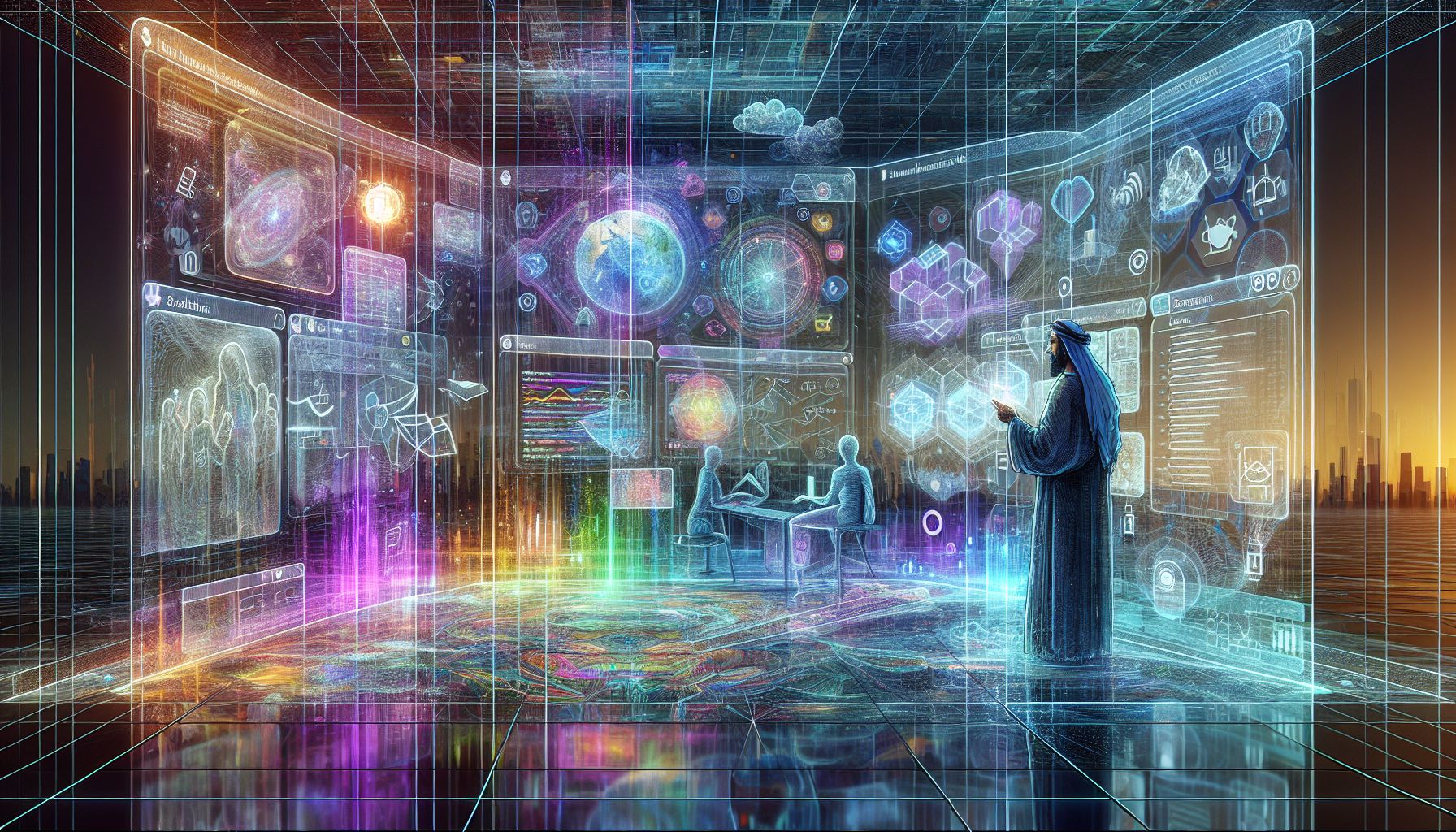📌 Let’s explore the topic in depth and see what insights we can uncover.
⚡ “Imagine shaking hands with a hologram and actually feeling the grip! Welcome to the future of interaction, where the line between the physical and virtual world is fading fast.”
Ever since Princess Leia’s pleading hologram sparked the adventurous spirit in Luke Skywalker in the 1977 film Star Wars, holography has been a captivating concept for many. Fast-forward to the present day, and the technology is no longer just a far-fetched fiction but a reality that’s shaping our world. In this blog post, we’ll dive into the fascinating world of holography, explore how it’s blurring the boundaries of interaction, and take a peek into the future where seamless interaction with technology is becoming the norm. Holography, the science and practice of making holograms, is an advanced form of photography that allows an image to be recorded in three dimensions. This mind-blowing technology offers a multitude of possibilities, especially when it comes to user interaction. From augmented reality to holographic teleconferences, holography is reshaping the way we interact with the digital world.
🎩 Holography: The Magic of Light and Sound

"Unveiling a New Era of Holographic Interactions"
To understand the magic of holography, we first need to familiarize ourselves with its key ingredients: light and sound. A hologram is a physical structure that diffracts light into an image. The term ‘holography’ comes from the Greek words ‘holos’, meaning ‘whole’, and ‘graphe’, meaning ‘writing’. Holography uses the interference pattern between two or more beams of coherent light (like lasers) to create a 3D image. In other words, it’s like creating a 3D snapshot of the light field, which can then be projected or displayed using appropriate optics. Sound, on the other hand, plays a critical role in the latest development of ‘acoustic holography’. This technique uses ultrasonic waves to manipulate physical objects, paving the way for touchable holograms.
🎭 Holography in Everyday Life: Beyond Science Fiction
Once confined to the realms of science fiction, holography is now seeping into our daily lives. Let’s take a look at some of the fascinating ways holography is being used today:
**Augmented Reality (AR)
** AR applications, such as Microsoft’s HoloLens, overlay digital information onto the real world. These holographic headsets allow users to interact with virtual objects as if they were real, revolutionizing fields like education, architecture, and gaming.
**Telepresence and Teleconferencing
** Holography brings a whole new dimension to online communication. With holographic teleconferencing, you can project yourself as a 3D hologram in real-time, making remote interactions feel more personal and engaging.
**Advertising and Entertainment
** 🧩 As for Businesses, they’re using holography to create eye-catching displays and advertisements. In the entertainment industry, deceased musicians have been “resurrected” as holograms for live performances, creating an unforgettable experience for fans.
🎇 Holography and the Future of Interaction
The possibilities for holography are boundless, and as the technology advances, we can expect even more seamless interactions in the future. Here are a few areas to watch:
**Touchable Holograms
** With the advent of acoustic holography, we’re one step closer to creating touchable holograms. This could revolutionize fields such as medicine, allowing doctors to ‘feel’ tumors or abnormalities in a patient’s body without invasive procedures.
**Holographic Data Storage
** Holography could offer a solution to the ever-growing demand for data storage. By storing data in three dimensions, holographic data storage could hold vastly more information than traditional methods.
**Holographic Displays
** Imagine a world where your smartphone projects holographic videos, or your car’s windshield displays holographic navigation. 🧩 As for These, they’re just a few examples of how holographic displays could redefine our interaction with technology.
💡 Tips for Embracing the Holographic Revolution
Excited about the future of holography and eager to get involved in this revolution? Here are a few tips:
**Stay Curious
** Keep yourself updated about the latest advancements in holography. Blogs, podcasts, and tech conferences are great resources.
**Get Hands-on Experience
** If you’re a developer or designer, consider experimenting with AR platforms like Microsoft’s HoloLens or Google’s ARCore. It’s a great way to understand the potentials and challenges of holographic interaction.
**Think Outside the Box
** The potential applications of holography are vast. Whether you’re a business owner, educator, or artist, think about how you can incorporate holography into your work.
🧭 Conclusion
Holography is no longer a mere figment of our imaginations - it’s a reality that’s transforming our interaction with technology. By creating a more immersive and intuitive experience, holography is blurring the boundaries between the physical and digital worlds. As we journey into the dawn of seamless interaction, it’s clear that holography will play a significant role in shaping our future. Whether it’s through touchable holograms, holographic data storage, or holographic displays, this revolutionary technology is sure to change our lives in unimaginable ways. In the same way that Luke Skywalker embarked on a galactic adventure after encountering a hologram, we too are on the cusp of a thrilling journey. The holographic revolution is here - are you ready to embrace it?
⚙️ Join us again as we explore the ever-evolving tech landscape.
